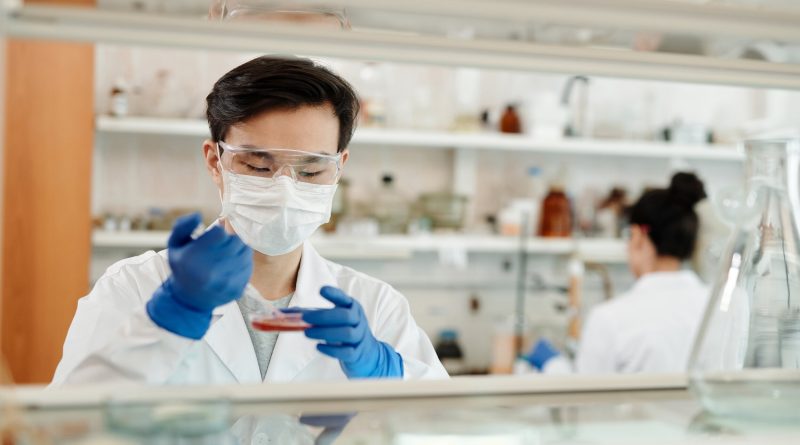Pandemic Pivot: Canadian Society for Medical Laboratory Science
Many CSAE members had to quickly ‘pivot’ to do business in a new economy, one where our members could no longer meet in person and where everyone is dealing with added anxiety and stress.
We have reclaimed the word “pivot” and use it to celebrate the innovation, compassion, and enduring nature of the association sector. We will be publishing a series of pandemic pivots to share the stories behind our members’ successes and learnings. In this issue, we spoke with Christine Nielsen, CEO of the Canadian Society for Medical Laboratory Science.
CSAE: What was your pandemic pivot?
Christine: We experienced several significant pivots in the past year. When this all started, we referred to our Business Continuity Plan, so at the first sniff of a public health crisis, we pulled the designated team together and began playing the “what if” game. We even had provisions for airborne illnesses, including limiting access to the building, increased cleaning protocols and distancing! We are medical laboratory scientists, after all, and were prepared post Avian Flu/SARS. Our priorities were to have no job loss and no loss of focus on the strategic plan. Our staff were prepared to do most of their jobs from home. Running an office in southern Ontario in the winter means sometimes it’s best, in the interest of safety, to call a Snow Day. Although we all had experience working from home for a day or two, no one was fully prepared to do it for more than a year!
The other big pivot was moving the high stakes certification exam for medical laboratory scientists to an At-Home Testing (remote proctoring) platform. Previously, all exams across the country were written in-person at designated sites. This change was something we were planning for, but the pandemic accelerated the process by a couple of years. While navigating an additional testing platform we also increased the number of exam sittings, to ensure the steady supply of qualified professionals to combat this health crisis, as medical laboratory technologists conduct the PCR tests for COVID19 across Canada.
Our focus on government relations and advocacy never waned. In fact, it ramped up because of the vital role our members were playing in this pandemic. We joined the Organizations for Health Action (HEAL) COVID19 Taskforce, and brought the voice of medical laboratory science to the federal Minister of Health each month.
We are also host to the premier medical laboratory science conference in Canada, LABCON – an in-person event that sees vendors, scientists, educators, managers and students come together for knowledge exchange and networking. We made the tough decision very early on to suspend the conference and move the speakers online for May 2020. We had over 200 attendees and saw a 96% approval rating for the event and platform. We’ve gone on to hold several more virtual events since then.
CSAE: What did you learn from this pivot – What went right? What went wrong?
CN: CSMLS reaped the benefits of advanced planning, with work-from-home structures already in place, and a Business Continuity Plan for a health crisis, a commitment to communication with stakeholders (staff, board, educators, students, members, volunteers), and having clear messages for media and other stakeholders. Key staff have been trained in crisis communication and media relations, so when the phone and email started buzzing, there was no hesitation to be consulted and quoted. In the early days of the pandemic, we spent time communicating how laboratory tests are developed and approved, why some testing seems to take forever (transportation of specimens, processing, quality checks etc.) and how supply chain works. We talked about false positives, false negatives, the importance of hand washing, mutation of viruses, rapid tests! We became a central hub of information for all things lab testing. We did print media, TV, radio, podcasts, blogs… it was a great time to highlight the role of medical laboratory professionals in the health of Canadians.
CSAE: Did you have to change any processes to allow for this pivot? If so, what did you change?
CN: The biggest changes we had to make were with technology to enable staff to answer office calls from home, while not revealing their home phone numbers. We moved to online payment for incoming and outgoing payments, something we always wanted to do but just hadn’t made the leap yet. We became masters in online meeting platforms, as the show must go on. We also insisted on documented self assessments for ergonomics working from home. If any staff needed a laptop, monitor, their office chair… come and get it!
CSAE: Did you meet any resistance to the change(s)?
CN: No – our staff and volunteers and external partners have been amazing. Is it our choice to work in crisis every day? No. We made the best of it.
Do we look forward to going back to the ‘olden days’ of team meetings and casual coffee chats at the office? Yes! But will we go back to the days when work from home was an exception, not our normal way of working? I doubt it. This is a unique opportunity to take the best from all worlds and find the best solution for staff motivation, satisfaction and productivity.
Christine Nielsen is the CEO of the Canadian Society for Medical Laboratory Science (CSMLS), which is the national certifying body for medical laboratory technologists and medical laboratory assistants, and the national professional society for Canada’s medical laboratory professionals. The CSMLS represents over 14,000 members across Canada and in countries around the world.

